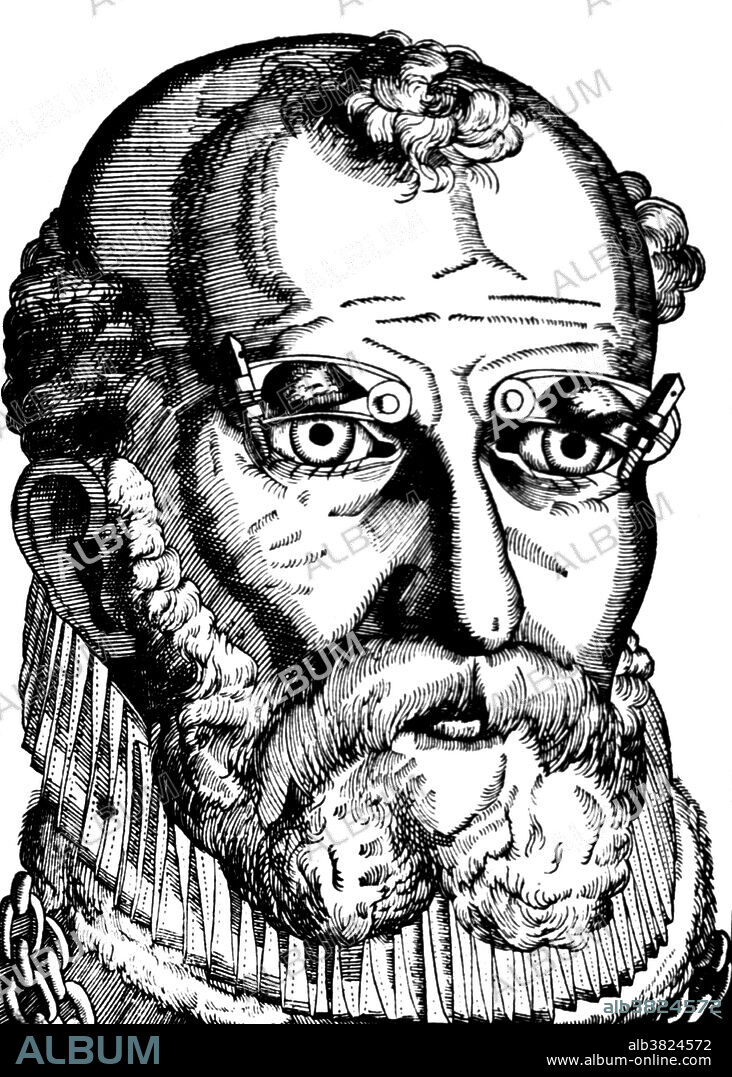alb3824572
Eyelid Surgery, 16th Century

|
Zu einem anderen Lightbox hinzufügen |
|
Zu einem anderen Lightbox hinzufügen |



Haben Sie bereits ein Konto? Anmelden
Sie haben kein Konto? Registrieren
Dieses Bild kaufen.
Nutzung auswählen:

Titel:
Eyelid Surgery, 16th Century
Untertitel:
Siehe automatische Übersetzung
Woodcut entitled: Use of the clamp in eyelid surgery. Close-up of a man's face showing eyelid clamps for the treatment of ptosis. Ptosis is a drooping or falling of the upper or lower eyelid. The drooping may be worse after being awake longer, when the individual's muscles are tired. If severe enough and left untreated, the drooping eyelid can cause other conditions, such as amblyopia or astigmatism. Ptosis occurs when the muscles that raise the eyelid (levator and Müller's muscles) are not strong enough to do so properly. It can affect one eye or both eyes and is more common in the elderly, as muscles in the eyelids may begin to deteriorate. Ptosis can also be congenital. Appeared in Ophthalmodouleia by Georg Bartisch, 1583.
Bildnachweis:
Album / NLM/Science Source
Freigaben (Releases):
Bildgröße:
2700 x 3775 px | 29.2 MB
Druckgröße:
22.9 x 32.0 cm | 9.0 x 12.6 in (300 dpi)
Schlüsselwörter:
16. JAHRHUNDERT • 16. JH. • AUGE • AUGE, SEHEN • AUGEN • BLOCK-DRUCK • CHIRURGIE • HOLZARBEIT: SCHNITZEREI • ILLUSTRATION • ILLUSTRATIONS • MANN • MEDIZIN: CHIRURGIE • OPERATION (MEDIZIN) • OPERATION • PLASTISCHE CHIRURGIE • SCHNITZEREI: HOLZ • SCHOENHEITSCHIRURGIE • SCHÖNHEITSCHIRURGIE • TECHNIK: HOLZSCHNITT
 Pinterest
Pinterest Twitter
Twitter Facebook
Facebook Link kopieren
Link kopieren Email
Email
